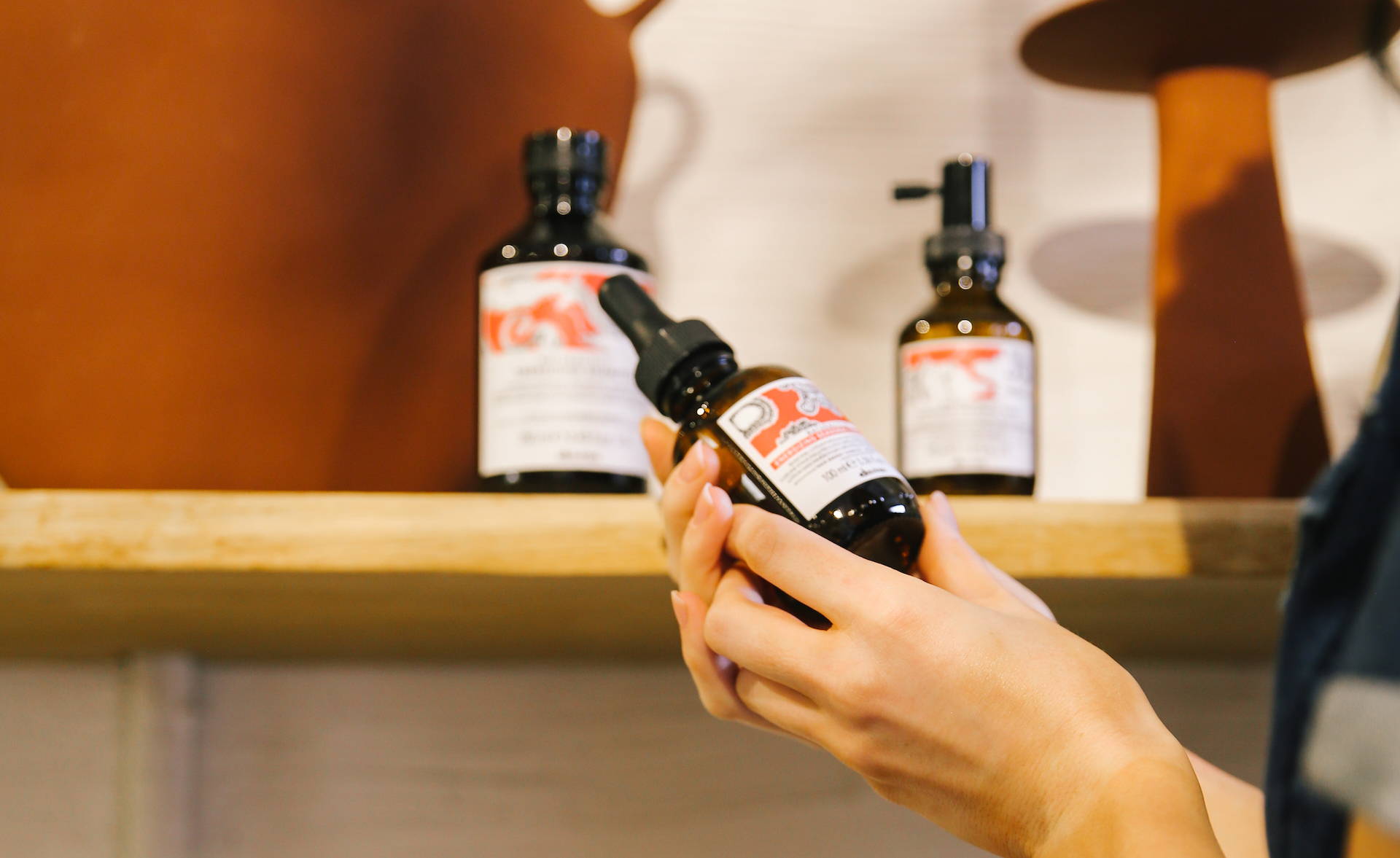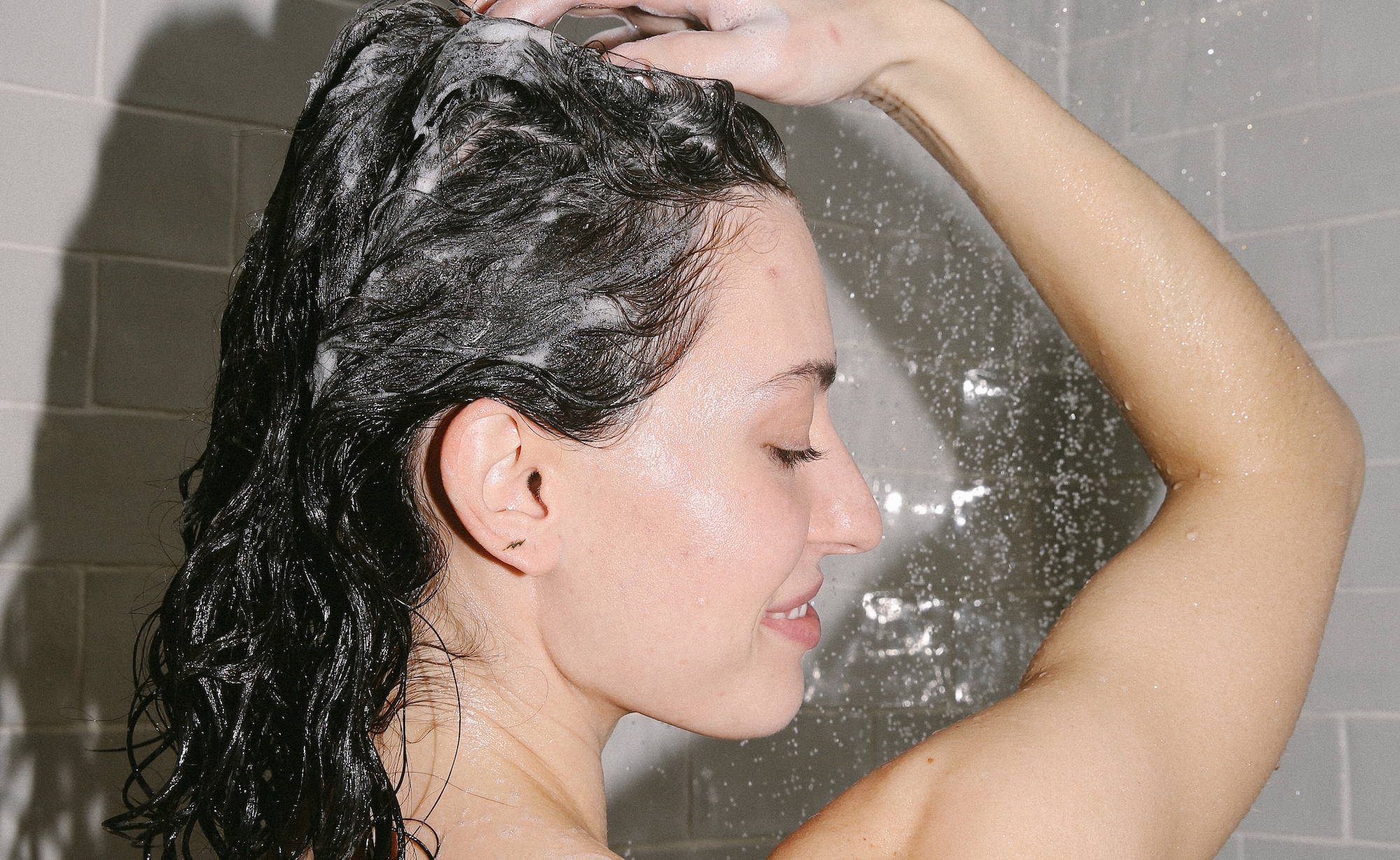Free Carbon Neutral Shipping On Orders $75+, Plus Free Samples!
Buy Now and Pay Later in 4-interest free installments with Klarna
You likely know that peppermint oil is a common ingredient in your toothpaste, but what about your hair products? The benefits of using peppermint oil date back thousands of years to the ancient Egyptians and Romans. Experts believe they first extracted the essential oil from the mentha piperita leaf to treat conditions like digestive issues and headaches. Today, peppermint oil is a popular essential oil known for its invigorating and cooling properties. It also has antimicrobial and anti-inflammatory properties, which can help soothe and cleanse the scalp, promoting a healthy environment for hair growth. We’re breaking down all the benefits of using peppermint oil for hair growth ahead, including how peppermint oil promotes hair growth , and how to add it to your hair care routine for healthy hair.
One of the uses of peppermint oil for hair include promoting hair growth. Menthol, the main component in peppermint oil (and what causes its cooling sensation) has been shown to increase blood flow to the scalp. This positively impacts blood vessels, stimulating regrowth and follicle depth, for thicker, stronger hair strands. Studies even suggest this hair regrowth occurs faster with peppermint oil than with minoxidil, which is a medicated hair loss treatment for baldness. More studies are needed to produce conclusive results, but peppermint oil is recognized by some experts to be helpful for certain hair and scalp issues. Peppermint oil is beneficial both to help slow down hair loss or hair thinning and to regrow hair that has already been lost. If you’re struggling with female or male pattern baldness or other types of hair loss, try adding peppermint oil into your hair care routine — a great way is by using Energizing Shampoo. More on that, and the benefits of peppermint oil below.

Peppermint essential oil is a popular ingredient in hair care products like shampoos, conditioners, scalp treatments, and hair masks. In addition to starring roles in the aforementioned products, it can be used on its own and mixed with other nourishing oils. Here are our favorite tips and tricks for using peppermint oil for hair growth in your hair care routine.
If you want to use peppermint oil on its own, it's best to dilute it in a carrier oil like jojoba oil or coconut oil. As with most essential oils, the pure form of peppermint oil is too strong and will irritate your skin. The best way to use this essential oil is to dilute it in your favorite carrier at a 1-2 percent concentration.
Rub a few drops of your diluted peppermint oil into your scalp with your finger tips. Work it in circular motions, giving yourself a scalp massage. Continue to massage the peppermint oil into your scalp for up to three minutes. The added friction of the massage helps to increase blood circulation to the scalp.
Once you’ve massaged the peppermint oil fully into your scalp, allow it to sit for at-least another five minutes before rinsing. To really activate your hair follicles and encourage healthy hair, let the peppermint oil work anywhere from an hour to overnight. Add a few drops to a hair protein treatment before bed and let the peppermint oil work its magic while you sleep.
After you've left the peppermint oil on your scalp for your desired treatment time, be sure to shampoo and rinse it out with cool water. This is an essential step to seal your hair’s cuticles and lock in all the peppermint goodness.
Combine a few drops of peppermint oil with your other favorite essential oils for new hair care and skin care favorites. Use peppermint oil with roucou oil as an ideal treatment for dealing with dandruff or eczema. Blend peppermint oil with tea tree oil for a spot treatment, or argan oil for moisture.

But peppermint oil doesn’t just help your hair grow faster. In addition to fighting hair thinning and hair loss, some of the other uses of peppermint oil for hair include:
Peppermint oil stimulates blood circulation to the skin, which may help with increasing dermal thickness, follicle number, and follicle depth.
Peppermint oil acts as an astringent that closes pores and tightens the skin. Its cooling sensations make it an effective anesthetic that leaves the skin numb to pain and soothes redness and inflammation.
Peppermint has a pleasant, cooling sensation when applied topically, and that sensation can help to reduce skin inflammation.
Peppermint oil stimulates blood circulation to the skin, reducing feelings of nervous tension, soothing feelings of irritability, boosting energy, balancing hormones, and enhancing mental focus.
Peppermint oil naturally cleanses the skin and has antiseptic and antibacterial properties. It balances the microbiome and pH of the scalp and regulates oil production. Its cooling effect also soothes acne inflammation.
Peppermint oil helps balance the pH of your scalp, which helps regulate oil production.
One of the benefits of using hair oil with peppermint is its conditioning properties. Peppermint oil delivers supreme hydration, calms dryness and comforts an angry scalp to return your hair to its original shape and condition.
Influence your mood with peppermint oil by styling with an aromatherapy diffuser. Combine peppermint and lavender oil at bedtime to relax. Or a DIY blend of rosemary oil and peppermint to start your morning sharp.

Peppermint oil should not be used on those with a dry scalp or brittle hair. It works best if you have oily hair and scalp. However, all hair types can use peppermint oil when used correctly and safely. People should avoid applying peppermint oil directly as it can be very irritating and those with allergies to essential oils or sensitive skin/scalp should avoid it or try a patch test prior to using it. Peppermint oil is great if your hair is on the greasier side. It clarifies, cleans, and invigorates the hair without stripping it of its natural oils. Peppermint oil balances your scalp's production of sebum, leaving your hair nourished and hydrated without weighing it down.
So is peppermint oil good for your hair? Essential oils are usually well-tolerated when diluted in a carrier oil. But it’s not uncommon to experience the following side effects.
Contact dermatitis is an itchy, red rash that develops when certain substances touch your skin directly. In addition to itchy, red hives, dry, cracked, or scaly skin, oozing blisters or bumps, or a burning and stinging sensation may occur.
Peppermint oil can cause an allergic reaction in those sensitive to it. In rare cases it can even cause anaphylactic shock if ingested, causing difficulty swallowing and breathing, tongue and lip swelling.
Menthol is the main component of peppermint oil and is responsible for the noticeable cooling sensation. There are a few reports of people being very sensitive to menthol and having severe reactions to even small amounts.
Exposure to menthol vapors can also cause eye irritation. In addition to being red or watery after exposure, your eyes may also have a grainy feeling, sensitivity to light, or blurred vision. In many cases, thoroughly rinsing the affected eye or eyes with room temperature water for 15 to 20 minutes can relieve symptoms.
Peppermint oil is a popular essential oil dating back thousands of years, known for its invigorating and cooling properties. It also has antimicrobial and anti-inflammatory properties, which helps to soothe and cleanse the scalp, promoting a healthy environment for hair growth. More research on the effects of peppermint essential oil on human hair is needed before calling it a cure for hair loss. But the evidence up to now is encouraging. Even if it doesn’t work for you to improve your hair growth, it could bring other benefits to your hair and scalp. So is peppermint oil good for your hair? The bottom line is yes. It strengthens your hair, calms your scalp—and helps your hair grow. For professional advice on adding peppermint oil to your routine, book an appointment with a Davines stylist.
by Jaclyn LaBadia, featured contributor
Laisser un commentaire
Les commentaires sont approuvés avant leur publication.